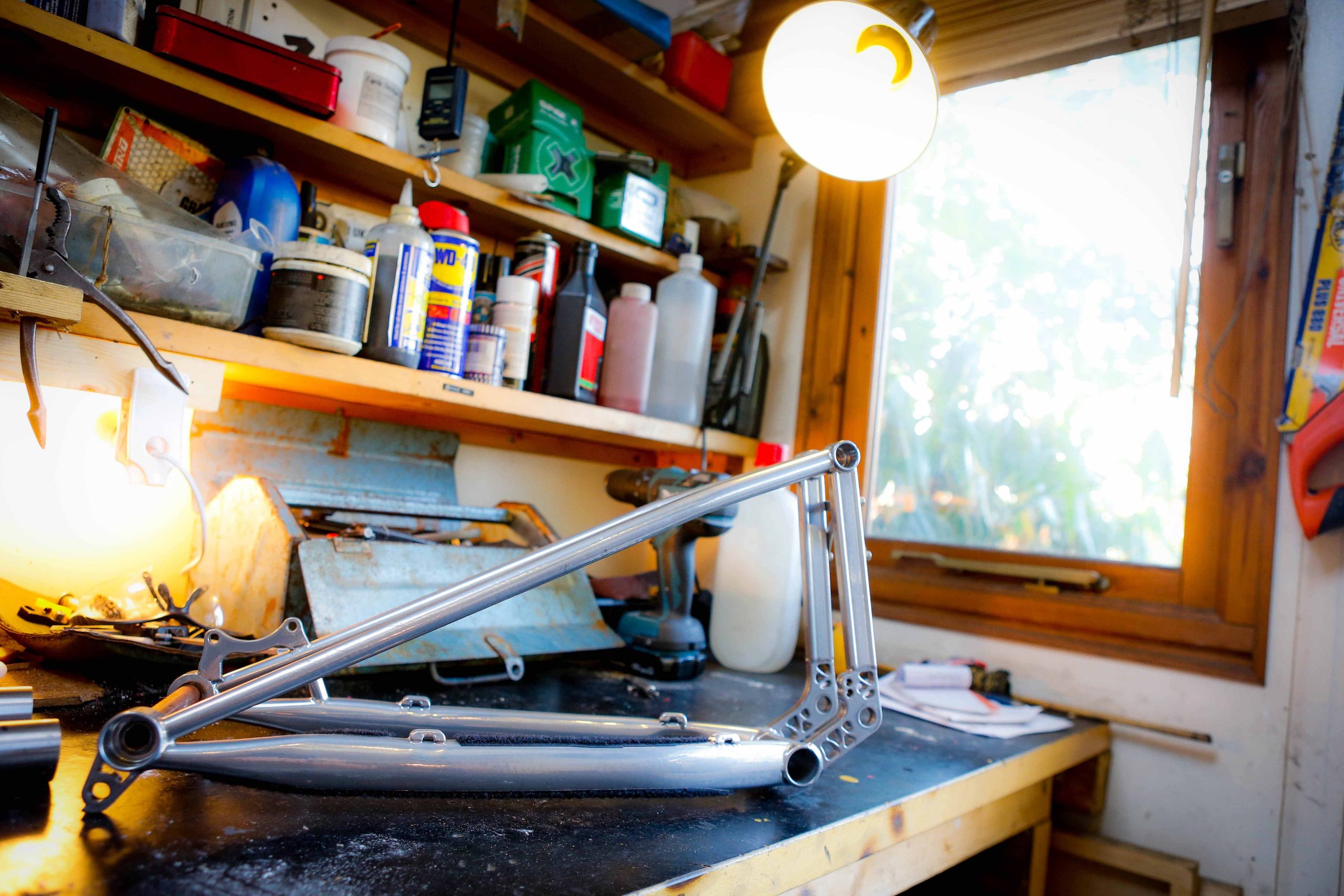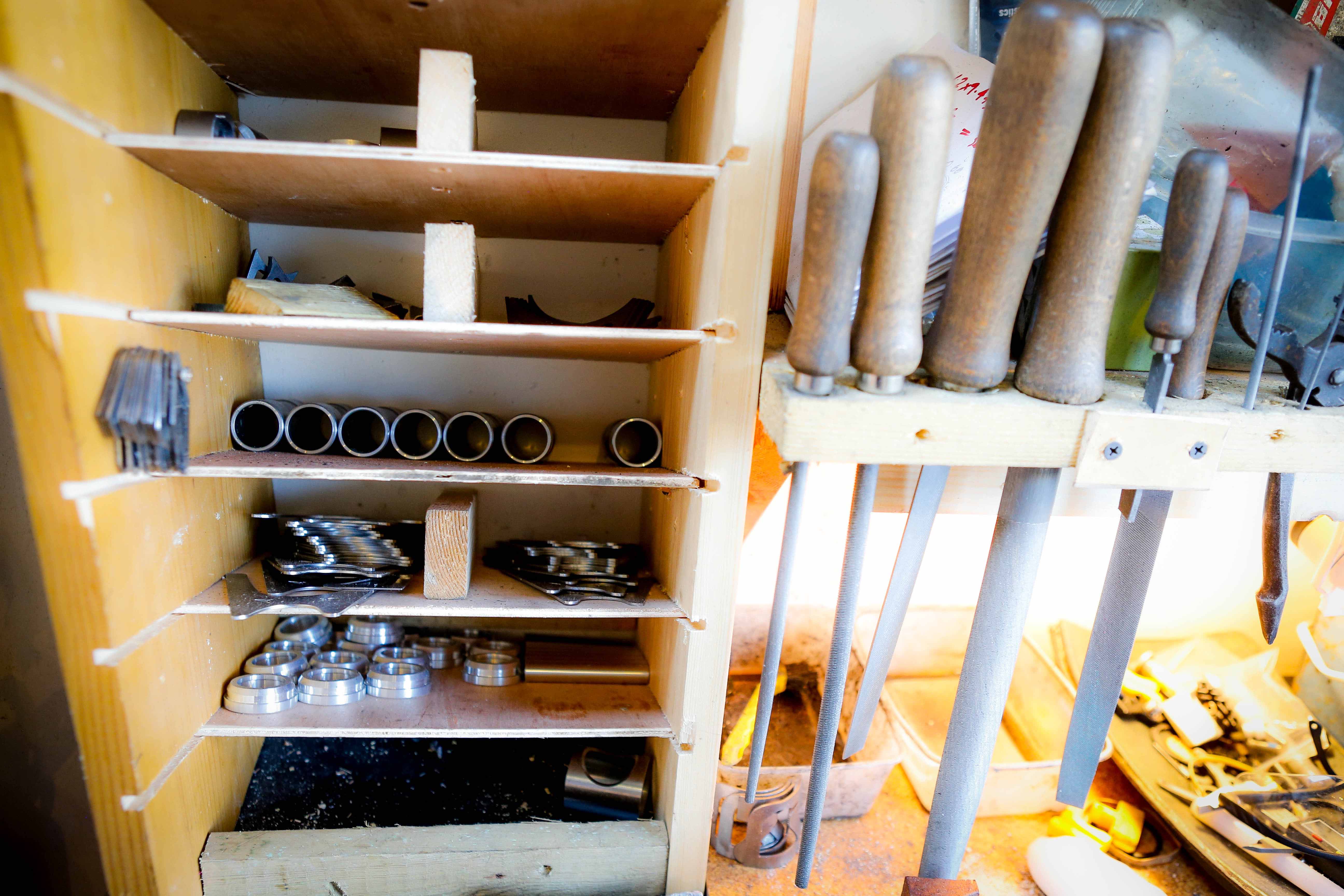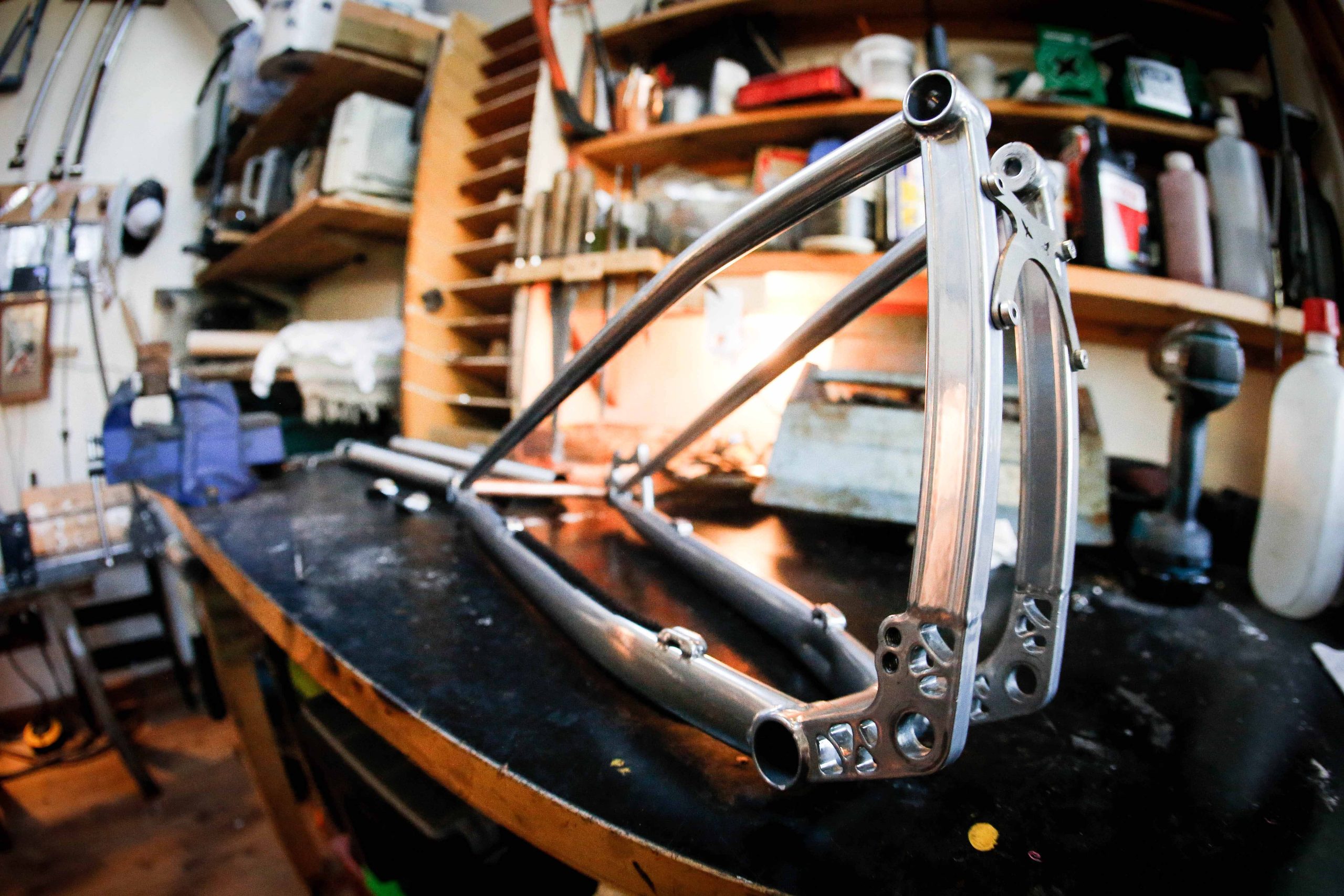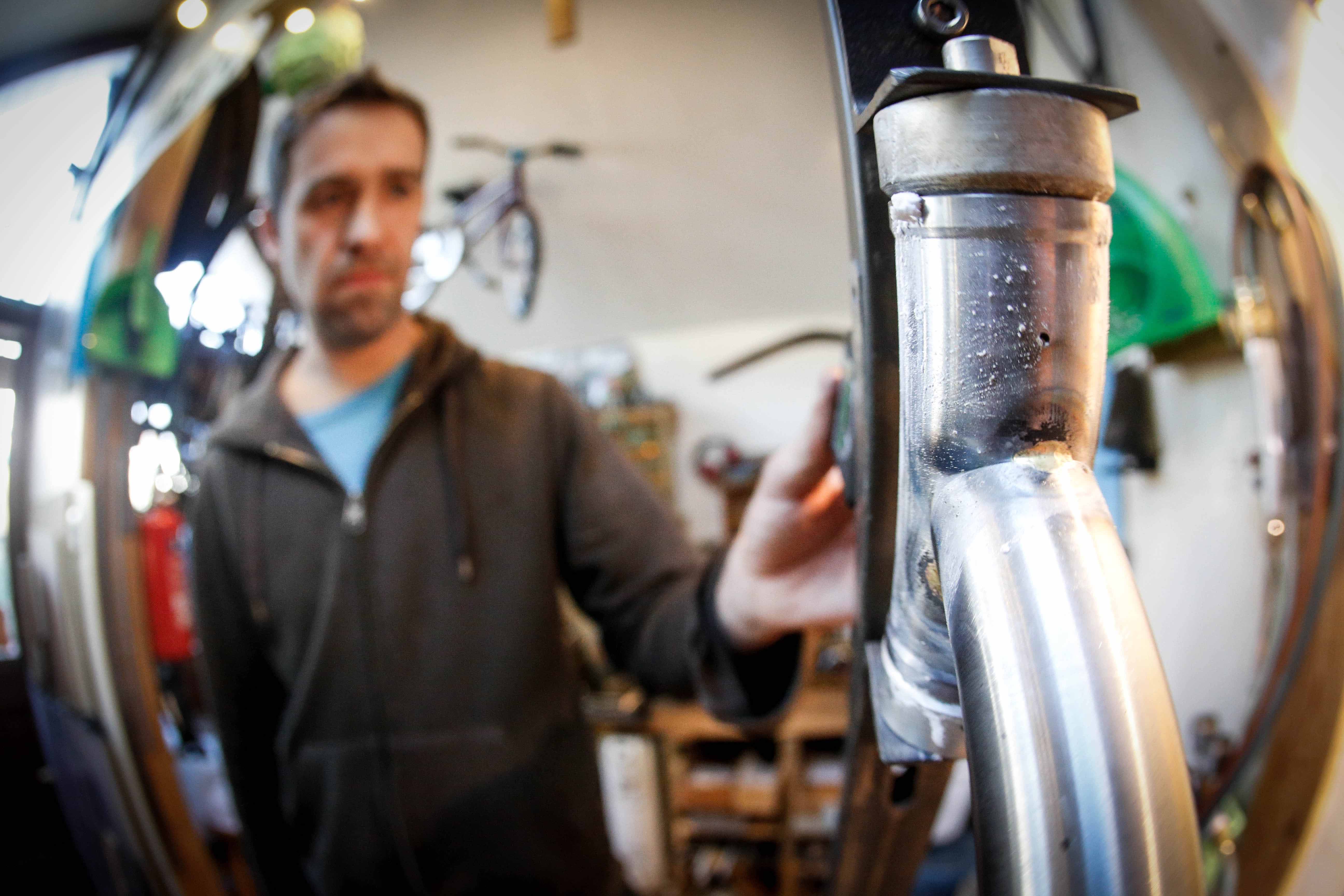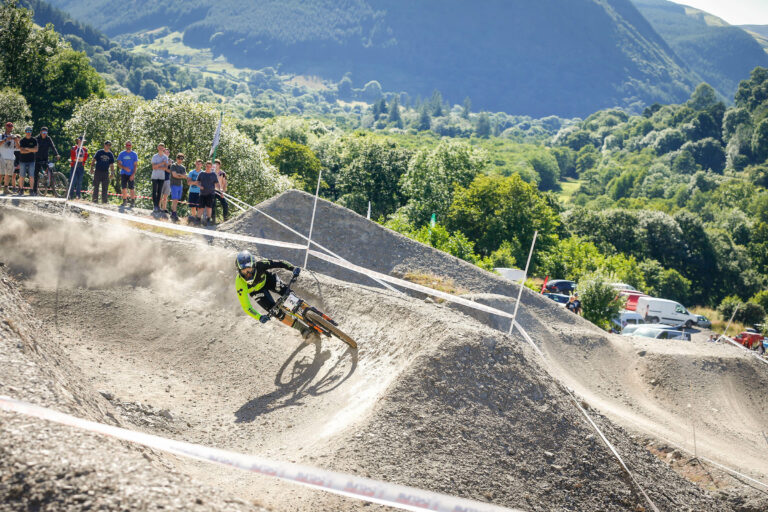In the garden shed of a terraced street in north Bristol there’s a man fabricating steel bicycle frames. He has recently quit his job in the aerospace industry to pursue his passion.
We like his bikes a lot, in fact his 29” Starling Murmur has been a stand out bike this year.
And so it is a bike of the West Country that has won our hearts and killed the clock recently. Who’d have thought that the material would be steel, the price far from ridiculous and the component specification of our test bike average to say the least.
The Murmur, with 29″ wheels and 145mm of Bristol travel and a skinny fork took several seconds off the apparent world class carbon 150-165mm enduro bikes on timed runs by several riders. It was silent, balanced, delivering levels of grip that have been largely forgotten since we chattered our way into what we were told was high-end carbon.
Don’t think for one minute though that the material has somehow made some magic bike, as we’ve been unimpressed with many steel full suspension bikes. What it does prove, that if done correctly steel is fast and it can be light without giving too much flex. It also asks the question, does carbon actually offer a performance advantage other than the lighter, stiffer, stronger talk that nearly everyone drags out? We talked to Starling creator Joe McEwan.
Come on then, tell me why steel feels so beautiful to ride? What’s the science?
My technical experience is in carbon fibre. But what I believe is happening (without any quantifiable evidence) is as follows…
For a given volume of steel, it is stiffer and stronger than both aluminium and carbon fibre. When built into a bicycles you need to use smaller diameter tubes, otherwise the wall thickness would be too small or the weight would be too high. Small diameter steel tubes give a less stiff frame than you would get with the large diameter tubes used in carbon and aluminium frames.
But stiffness is not necessarily a good thing. Marketing suggests it is, probably because its a simple measurable way to say one bike is better than another. I believe we are so driven by marketing influence that we believe stiffness should be high, and therefore we lose confidence in a flexy bike and we therefore ride badly.
So, if you ignore marketing, and our marketing lead intuition, then you don’t necessarily need the stiffest bike. My bikes are not flexy, but they are not overly stiff either. By luck or judgement, they seem to be about right!
Also, small diameter tubes don’t result in the big resonance boxes of aluminium and carbon bikes. To me silence is massively important to your confidence in a bike and consequently your speed.

Do you believe steel has a performance advantage over carbon or aluminium in any way?
Other than what I have mentioned before, steel tubes are tougher and more damage resistant. I had a steel Dobermann DH bike with a massive dent in the top tube. It didn’t worry me at all. Now if it were an aluminium or carbon bike, I’d be shitting myself.
But, material choice alone does not make a good bike. It’s a complicated design problem, with very little technical evidence (other than times) of what a good bike is. I’ll be damned if I know the answer!
You’re a carbon expert, give me some reasons why you didn’t use carbon to make your frame?
Firstly carbon is quite tricky to do at home. Some people do with some success, but it all looked a bit much to me. Also, having worked in aerospace for 20 years, I’ve seen a very high standard of carbon fiber manufacture. Even the tiniest imperfection could result in scrapping a multi thousand pound part.
The carbon technology used for bikes, although I’m sure it’s plenty fit for purpose, is a bit more agricultural. Sorry Santa Cruz, but the V10 cross sectioned frame from a few years ago really made me cringe.
Also steel is more forgiving for the home builder. It also allows you to quickly iterate designs. I’ve always ridden steel bikes and always loved them. I’ve had steel hardtails and a few steel DH bikes, but there was never any decent fully steel mid travel bikes. This was the gap I wanted to fill when I first went about designing mine.
How much does the carbon you work with in aerospace differ from bicycle manufacture?
See above. But waviness/porosity/tolerances are all massively small (i.e. good) in aerospace compared to bikes. But aerospace is a hugely limited by the risk associated with new materials. It’s very hard to introduce a new material or technology in aerospace, even if it has obvious benefits. You need to fully prove it hasn’t got some hidden problem that will cause a plane to crash, i.e. the industry is very safety driven. Whereas bikes can readily take advantage of new technologies and use them to their advantage.



